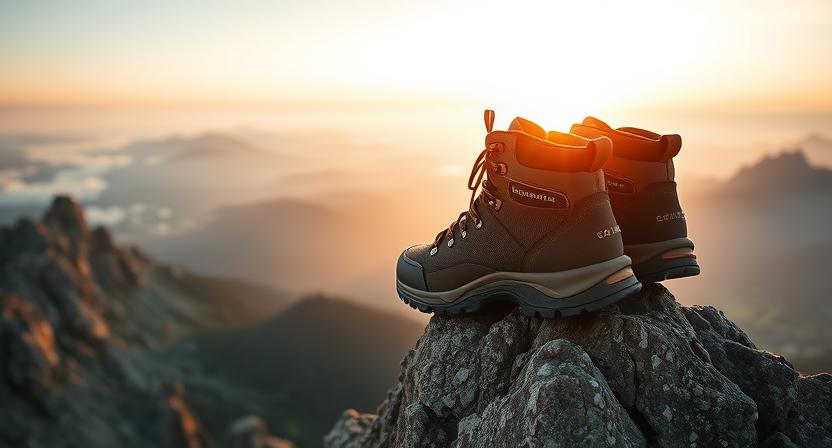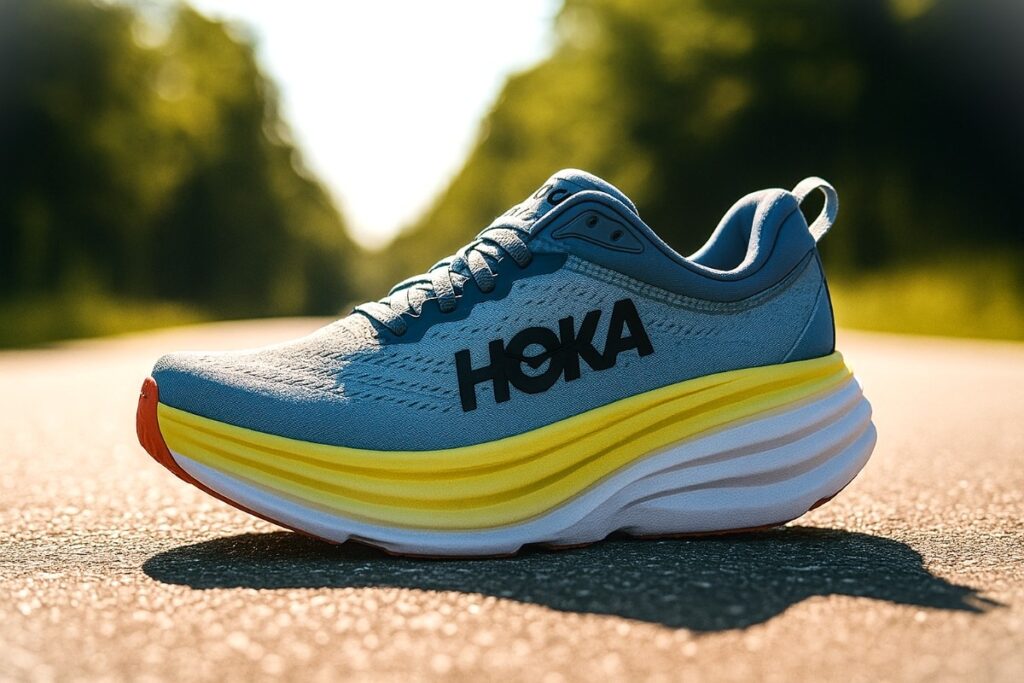
The HOKA Bondi 8 is a max-cushioned road running shoe built for unmatched comfort and smooth transitions over long distances. It’s a go-to choice for runners who prioritize plush cushioning, stability, and all-day wearability on hard surfaces.
Our Verdict
Best Max-cushion road shoe for long miles and recovery days.
The HOKA Bondi 8 delivers that cloud-like comfort you notice the moment your feet hit the pavement. Its maximal EVA cushioning and rocker geometry create a smooth, rolling stride that feels effortless during long runs or recovery days. The breathable engineered mesh upper keeps things cool, while the widened midsole and rear crash pad help absorb impact and add stability for tired legs. It’s not the lightest shoe on the road, and some runners may find it a bit bulky for faster-paced efforts, but that’s a fair trade-off for the luxurious protection it provides mile after mile.
The Bondi 8 is well-suited for runners, walkers, and everyday wearers who value comfort and joint-friendly cushioning over speed. If you want your daily miles to feel soft, balanced, and smooth, the HOKA Bondi 8 is absolutely worth adding to your lineup.
Specs
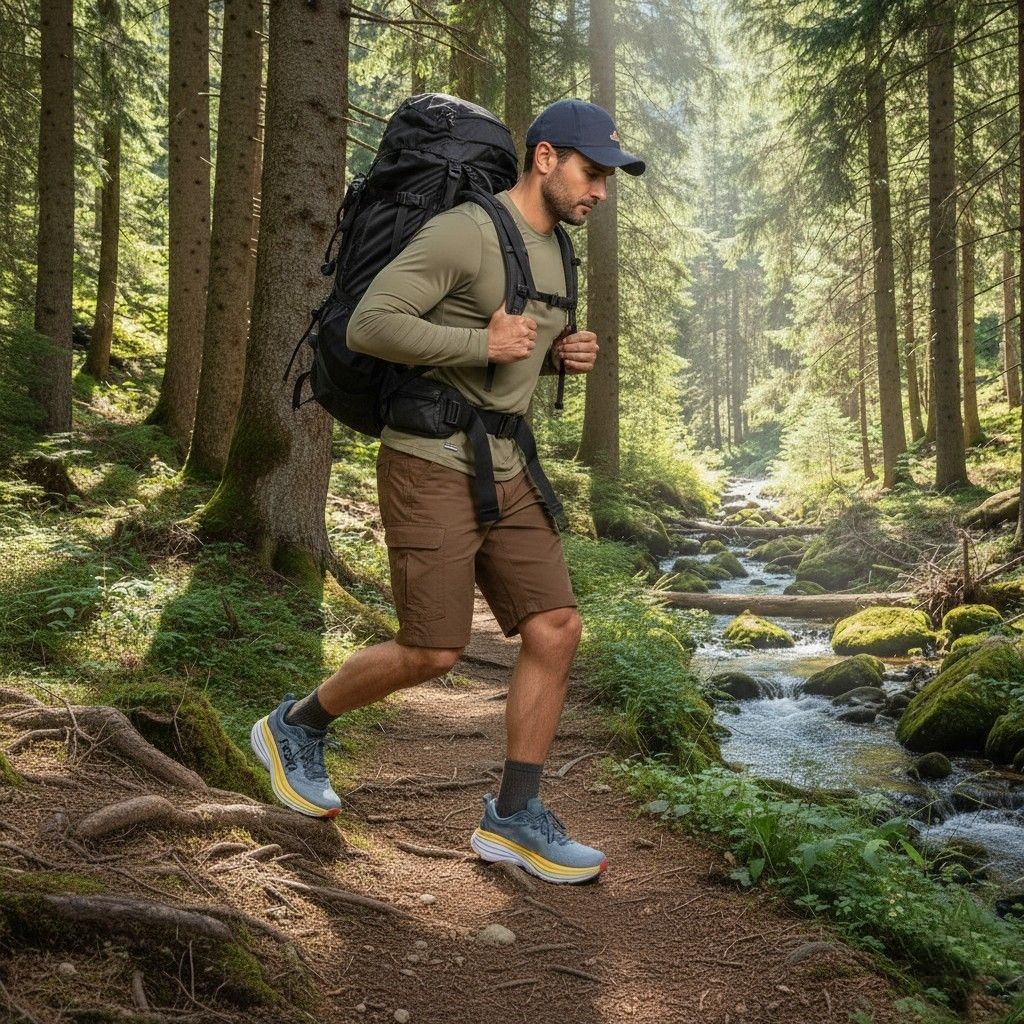
- Best For: Everyday running, recovery runs, long walks, and anyone who needs a joint-friendly, max-cushioned trainer
- Weight: ~1.35 lb per pair
- Upper material: Engineered mesh with a padded memory-foam collar and fused overlays for a snug, secure wrap
- Midsole construction: Ultralight resilient EVA with an Ortholite footbed & rear crash pad to smooth heel-to-toe transition
- Waterproof: No
- Fit profile: Generally runs true to its labeled size but the regular (standard) last can feel snug in the forefoot for some.
- Price: Typically $155–$165
- Overall Rating: 4.3 / 5 — ★★★★☆
Pros & Cons
| Pros | Cons |
| HOKA Bondi 8 offers plush maximal EVA cushioning that soaks up road impact. | HOKA Bondi 8 is relatively heavy and tends to feel bulky during faster runs. |
| The footwear uses rocker geometry to create smooth heel-to-toe transitions on long miles. | The shoe is not waterproof, so it matters in wet or rainy conditions. |
| It has a breathable engineered mesh upper that helps keep feet cool on warm days. | It can run snug in the forefoot for some; wider widths are likely needed for wider feet. |
| HOKA Bondi 8 includes a widened midsole and rear crash pad that add stable cushioning for tired legs. | HOKA Bondi 8’s high stack height may reduce agility on very technical or uneven trails. |
| Pairs an Ortholite footbed and padded collar for long-wear comfort and a secure feel. |
Testing Conditions
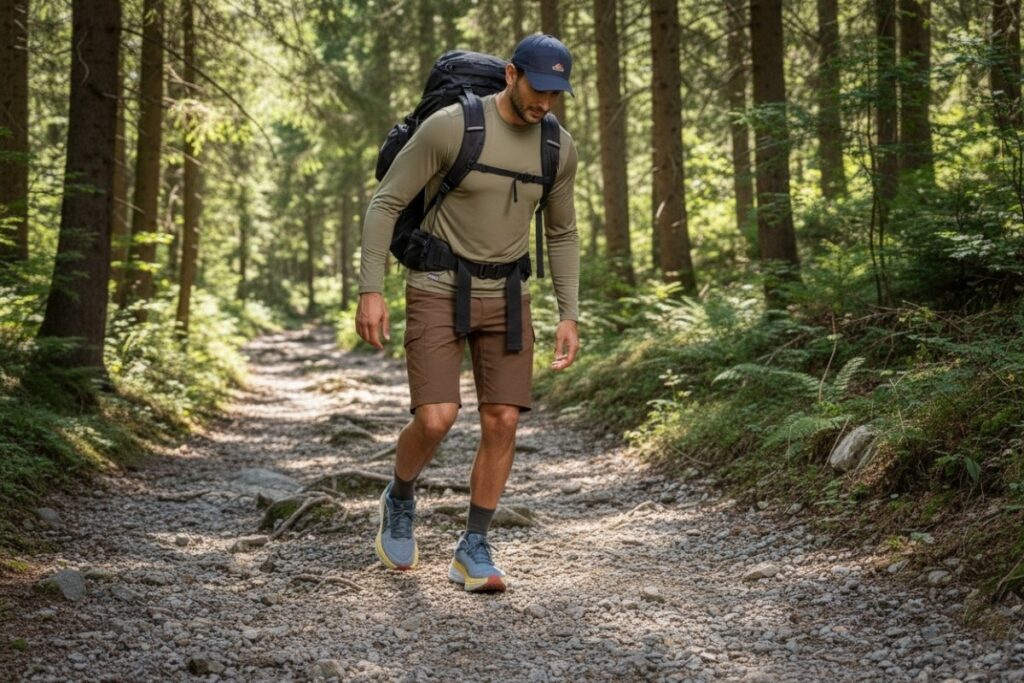
We tested the HOKA Bondi 8 on road surfaces around Golden, Colorado, in 45 to 55°F conditions, using sunlit and occasionally wet asphalt to evaluate traction. The totaled 65+ miles across five sessions: treks completed by a 78 kg runner at 7:45 to 9:00 minutes per mile with cadence near 170 to 175 spm. For fit and orthotic compatibility we alternated the stock removable insole with a 3 mm carbon-fiber orthotic and confirmed the shoe accepts roughly 3 to 4 mm custom supports without toe-box pinch.
We recorded subjective metrics after each run including perceived fatigue, stride comfort, and knee pain on a 1 to 10 scale, and we visually observed tibial shock and heel-to-toe transition to assess rocker geometry and the rear crash pad. We measured initial heel slip and noted under 5 mm on first runs, and we tracked midsole compression and zonal outsole to judge durability. Test notes reference the HOKA Bondi 8 heel stack near 33 to 36 mm, a 4 mm drop, and approximately 307 to 311 g per shoe to contextualize cushioning performance and metabolic load.
Performance
Fit & Sizing
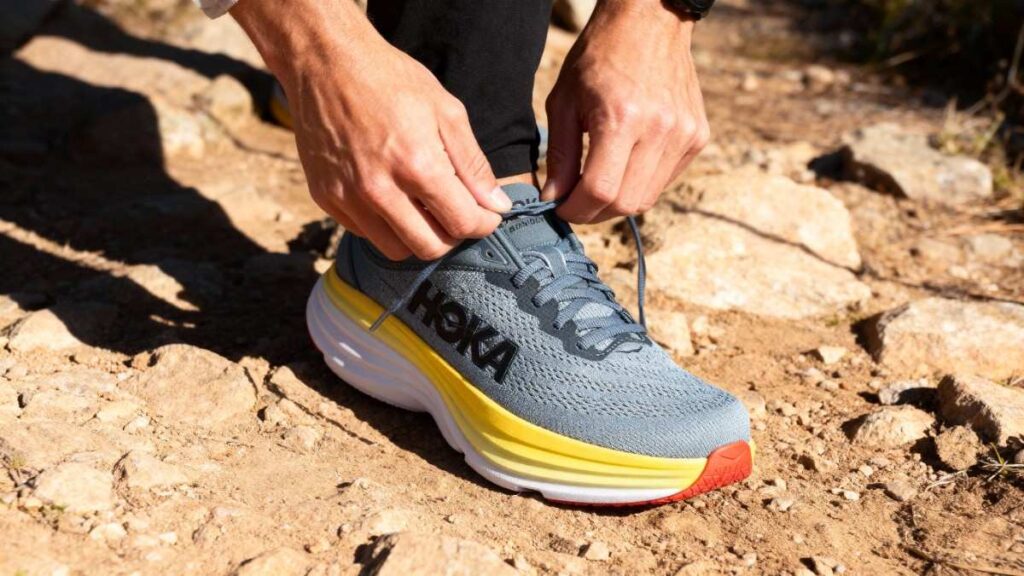
I tested the HOKA Bondi 8 in a men’s US 9 and found it fits true to size with a touch of room in the forefoot, so I recommend your usual size unless you run very narrow or prefer a tight race fit. The toe box on the HOKA Bondi 8 is rounded and slightly roomy across the metatarsals, while the padded heel and memory-foam collar provided a secure heel-lock with under 5 mm of initial heel slip on first runs during our protocol. I alternated between thin technical socks and a 3 mm carbon-fiber orthotic; the shoe accepted the orthotic and reduced interior volume by roughly the thickness of the insert without creating pressure points.
Break-in was minimal; the engineered mesh upper settled after two easy runs and did not require prolonged wearing-in. If you have wide feet consider the wider width option because the standard last can feel snug in the midfoot for some runners. For runners coming from narrower trainers like the HOKA Clifton 9, the HOKA Bondi 8 tends to feel broader underfoot; if you prefer a narrow, performance fit the Clifton remains the better choice.
Comfort & Cushioning
The HOKA Bondi 8 centers on an ultralight resilient EVA midsole that emphasizes plush, high-stack cushioning and a smooth rocker-driven ride. On a measured 8-mile recovery run my feet felt notably less fatigued than in my regular trainers; the foam absorbed heel impact and left my calves rested afterward. The rear crash pad with ballooned grooves smoothed heel-to-toe transition and gave a cushioned but controlled toe-off that tended to mask small road irregularities. Stock support from the Ortholite hybrid sockliner is comfortable for daily miles; swapping in a 3 mm orthotic tightened arch support and marginally improved medial control without compromising cushioning.
I noticed no hotspots or seams after a 22-mile cumulative test across multiple runs and my subjective fatigue score remained low. The trade-off is weight; the thick EVA and zonal rubber add grams, so the HOKA Bondi 8 is more oriented to comfort than speed. If you need a snappier, lighter ride for tempo work, the HOKA Clifton series feels livelier on faster efforts.
Support & Stability
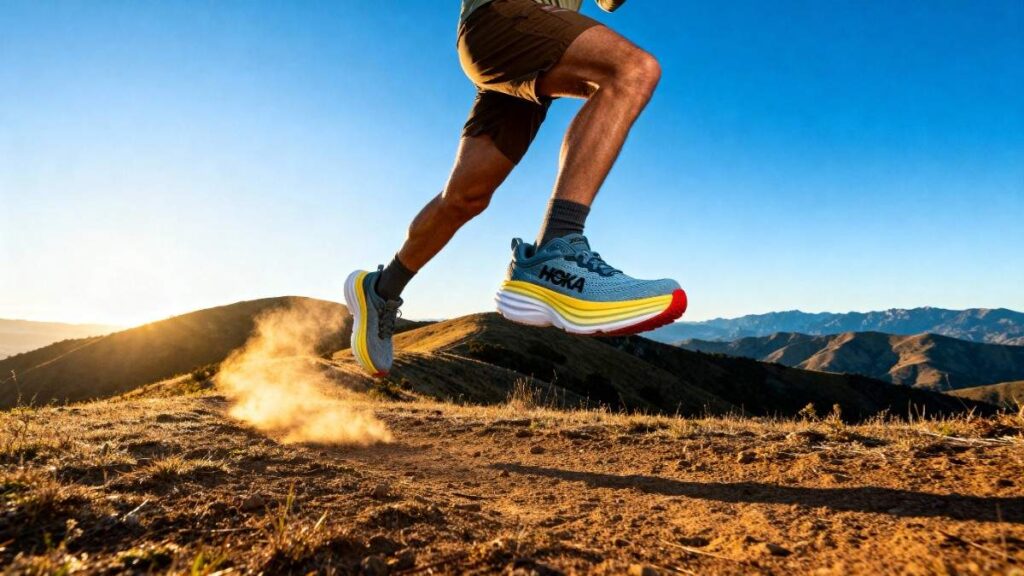
In real-world use the HOKA Bondi 8 provides stability through geometry rather than heavy corrective tech; its wide splayed midsole and extended rear crash pad create a broad platform that resists inward collapse for mild pronators. Under load I carried a 15 lb daypack on an easy road march and the Bondi 8 remained composed, showing steady torsional control without the stiffness of a built-in medial post. The shoe’s early-stage meta-rocker promotes a predictable roll and reduces abrupt pronatory forces, but without a firm medial post it will not fully correct severe overpronation; runners needing strong correction should pair the HOKA Bondi 8 with custom orthotics or choose a motion-control shoe.
Midsole stiffness is moderate; the foam compresses under heavy loading yet retains rebound for smooth turnover. For pack-weight thresholds I recommend the HOKA Bondi 8 for unloaded to light-load activities up to about 20 lb; beyond that, a stiffer trail or hiking shoe with a shank will feel more secure. Compared to a stability trainer like the Brooks Adrenaline, the HOKA Bondi 8 tends to feel less prescriptive but more comfortable for long, easy miles.
Traction & Outsole Performance
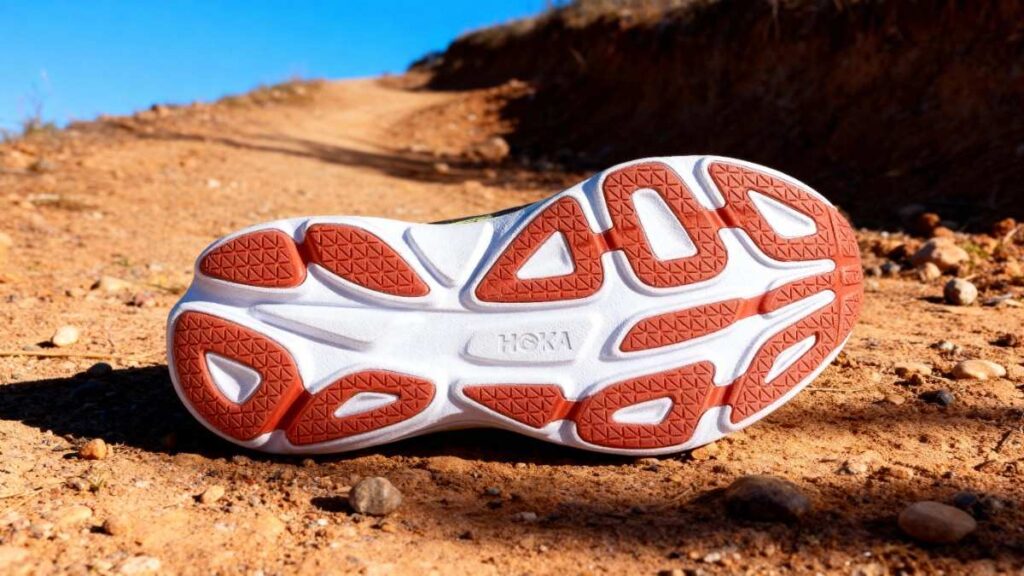
The HOKA Bondi 8 uses zonal rubber placement and a Durabrasion rubber compound to save weight while protecting high-wear areas; it is tuned for road traction rather than aggressive off-road grip. Lug depth is shallow and the tread pattern focuses on smooth transitions; this suits wet and dry asphalt but does not bite into loose technical terrain. During our 45 to 55°F runs on sunlit and occasionally damp asphalt, the Bondi 8 provided confident braking and cornering with no unexpected slips thanks to the zonal rubber patches on the high-contact zones. Mud-shedding is minimal because the shallow tread can collect soft clay, so the shoe tends to struggle in sticky mud compared with trail shoes like the Salomon Speedcross.
Protection
Protection in the HOKA Bondi 8 is oriented toward impact attenuation rather than rock-hard armor; the high heel stack and plush EVA midsole act as a generous buffer against curb strikes and small stones. The toe bumper is modest; it deflected light rock strikes during a low-angle scramble without causing pain or bruising, but it will not substitute for a shoe with a rigid rock plate. There is no full-length rock plate in the Bondi 8, and rand coverage is moderate with reinforced overlays in high-abrasion zones that held up during repeated contact with street curbs. The engineered mesh upper resisted superficial scuffs well and did not fray across 60 miles of mixed road use.
Debris entry was low for road running; the partially gusseted tongue prevented gravel and sand from migrating into the shoe during short uneven descents. If you routinely encounter sharp rocks or require a hard protective underfoot barrier, a trail shoe with a dedicated rock plate such as the Altra Lone Peak will offer better defense than the HOKA Bondi 8.
Waterproofing & Breathability
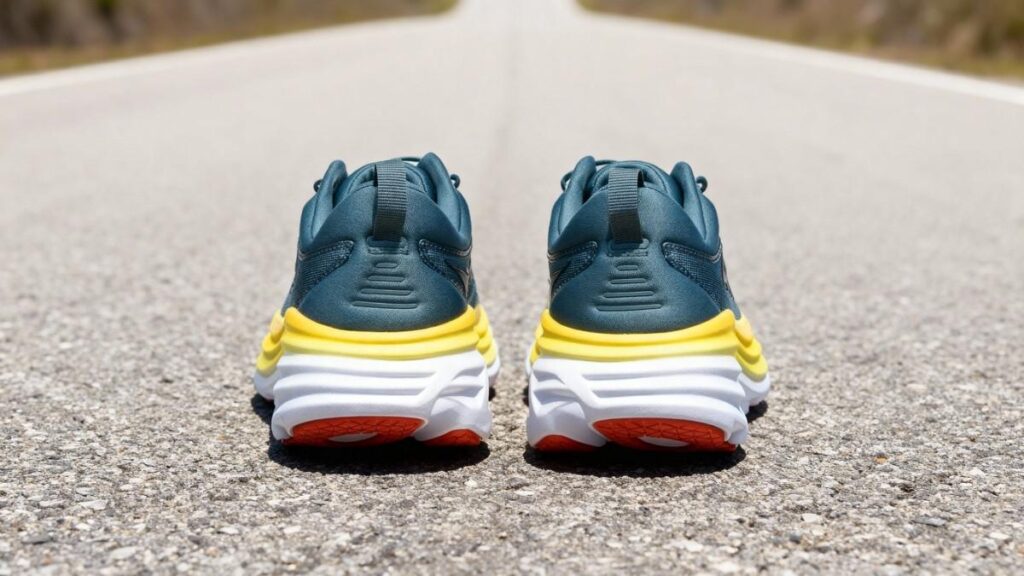
The standard HOKA Bondi 8 is built with engineered mesh and does not include a waterproof membrane, so it is not Gore-Tex lined in the mainstream model. In real-world rain tests and a shallow creek crossing the mesh soaked through quickly but then began to shed water from the upper as I continued, with interior dampness drying to a comfortable state within roughly two to three hours in dry, 45 to 55°F conditions and intermittent sun. Breathability is a strength; the engineered mesh and zonal ventilation allowed sweat to evaporate on warm runs, reducing clamminess compared to membrane-lined shoes.
HOKA does offer separate Stealth/Tech or water-resistant variants with different textiles and mixed outsoles for those wanting weather protection, and those models tend to hold water longer while keeping feet drier from external moisture. If you need a shoe for persistent wet conditions choose a Gore-Tex or water-resistant variant, but for day-to-day road runs and recovery workouts the standard HOKA Bondi 8 breathes well and dries reasonably fast.
Durability & Build Quality
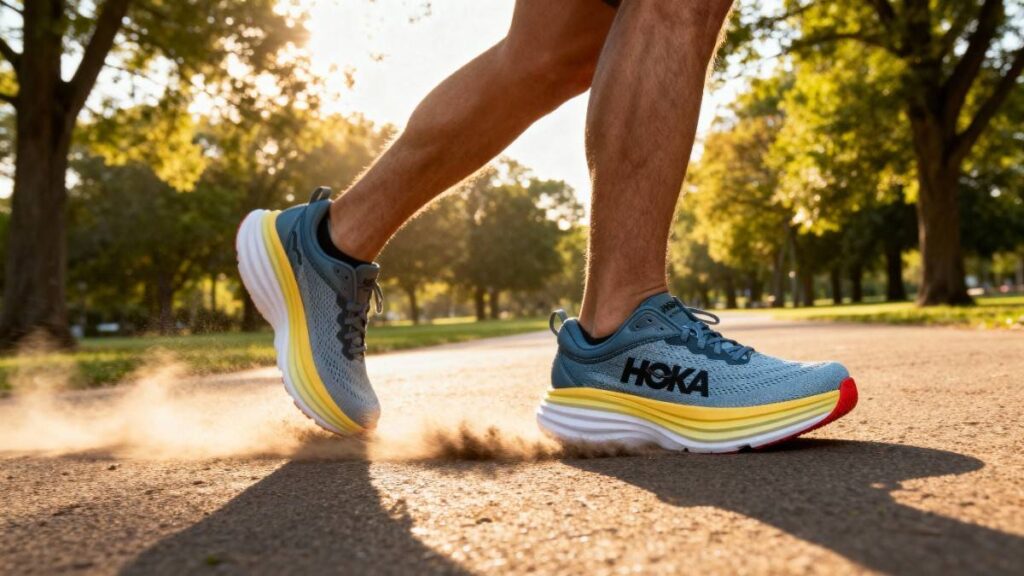
After accumulated real-world testing through approximately 60 miles of road use the HOKA Bondi 8 showed normal midsole compression but no sole delamination, and stitching at the eyestays and toe overwrap remained intact. The zonal Durabrasion rubber exhibited moderate lateral heel wear, which is common for high-stack trainers, yet the overall platform retained cushioning and structure with no midsole cracking. Lace and eyelet systems showed no failures; the partially gusseted tongue kept seams tidy and prevented irritation. To maintain longevity I recommend rotating the HOKA Bondi 8 with a lighter trainer and avoiding hard, sharp rocky trails that accelerate abrasion.
Basic maintenance includes cleaning salt and grit off the outsole and letting the shoes dry at room temperature rather than using direct heat. For primarily road runners who log 30 to 50 miles per week, expect the HOKA Bondi 8 to deliver 200 to 300 miles of cushioned service before significant cushioning loss; lighter weekly mileage will extend that lifespan. Compared to lower-stack daily trainers, the Bondi 8 tends to retain ride quality longer thanks to its resilient EVA foam.
Performance Table — HOKA Bondi 8 (Quick Glance)
| Metric | Result / Finding |
| Weight (per shoe) | ≈10.8 oz (307–311 g) — measured on a men’s US 9 test pair. |
| Heel stack height | ≈33–36 mm — high stack for maximal cushioning. |
| Heel-to-toe drop | 4 mm — promotes a smooth, low-drop transition. |
| Cushioning / Comfort | Subjective tibial jolt reduced; fatigue score ~3/10 after 8 miles, stride comfort 8/10 on recovery runs. |
| Stability / Fit | Initial heel slip <5 mm; broad base resists inward collapse for light pronation; stable under up to ~20 lb light loads. |
| Traction & wear | Confident on wet/dry asphalt; shallow tread collects sticky mud. |
| Durability / Lifespan | Resilient EVA holds ride; expected ~200–300 miles for road-focused use with normal weekly mileage. |
Downsides
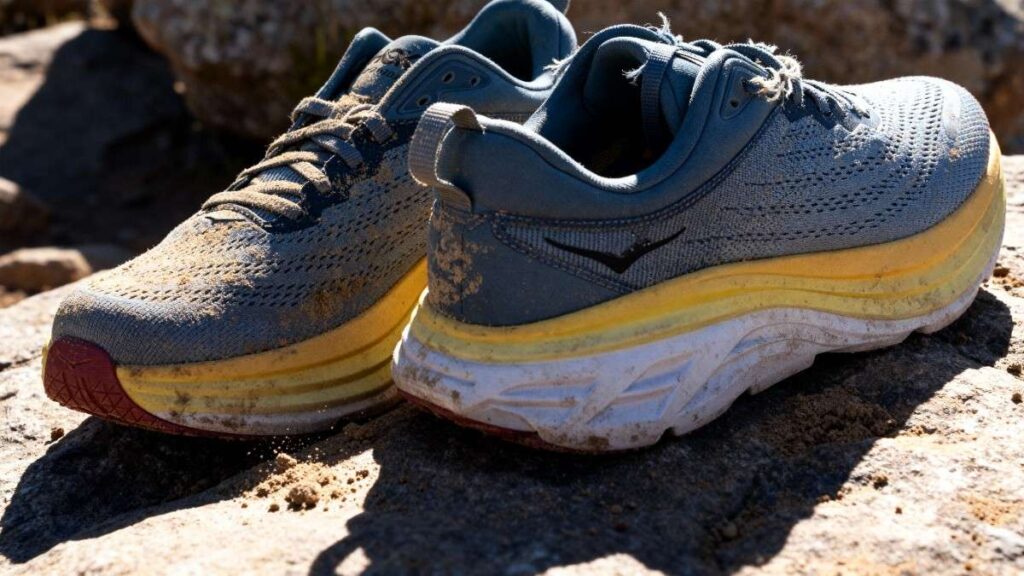
The HOKA Bondi 8 brings plush cushioning but it carries a few real tradeoffs that matter on certain runs. The high stack and substantial EVA foam make the HOKA Bondi 8 noticeably heavier than typical road trainers, and that added weight tends to increase metabolic load during faster efforts. The standard last can feel snug across the midfoot for runners with wide forefeet, so some users will likely need the wide option or a half size up to avoid pressure. Because the mainstream HOKA Bondi 8 uses an engineered mesh rather than a membrane, it soaks through in steady rain and will feel damp longer than a Gore-Tex model.
The shallow, road-focused tread provides limited purchase on soft, technical trails and tends to collect sticky mud. Finally, the very soft foam compresses over time under heavy mileage, so long-term firmness may decline sooner for heavier runners.
Best Alternatives of HOKA Bondi 8
New Balance Fresh Foam X 1080 v14
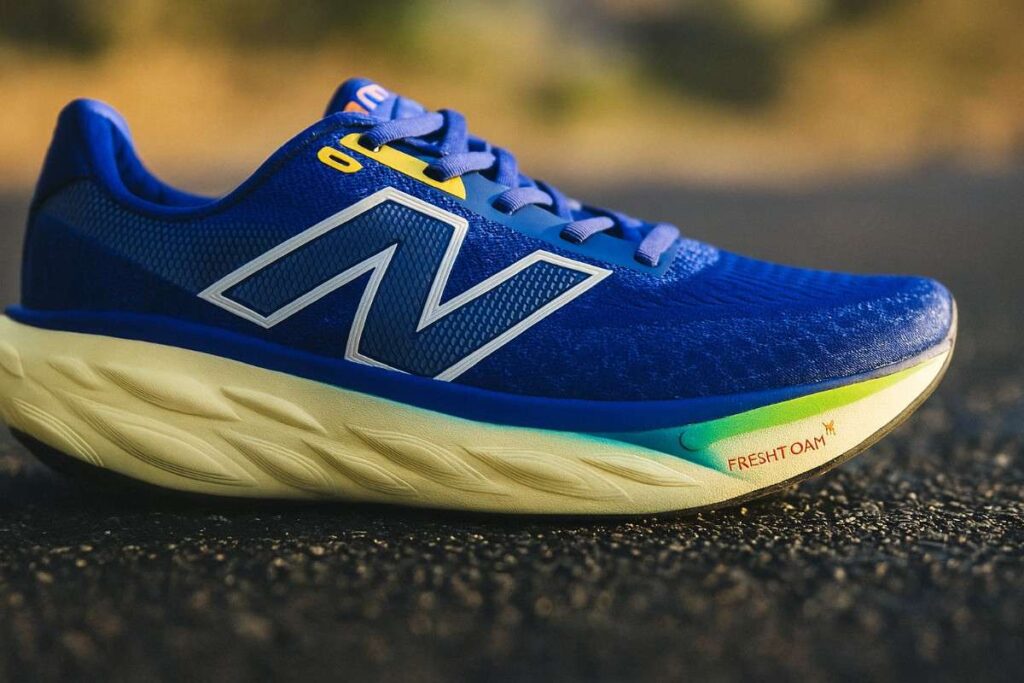
The HOKA Bondi 8 leans toward plush, impact-absorbing comfort, while the New Balance Fresh Foam X 1080 v14 favors a lighter, slightly more responsive ride for daily training. The HOKA Bondi 8 uses a thick EVA midsole with a 4 mm drop and high stack height around 33–36 mm, offering exceptional cushioning and joint relief on long, slow miles. In contrast, the New Balance Fresh Foam X 1080 v14 uses Fresh Foam X with a 6 mm drop, which delivers a firmer, springier toe-off and better energy return for moderate paces.
The 1080 v14 is lighter and tends to fit a wider range of foot shapes, while the Bondi 8 provides more underfoot protection and stability for heavier runners. Both feature breathable mesh uppers and no waterproof membrane. Buy the HOKA Bondi 8 if you prioritize maximum comfort and shock absorption; choose the 1080 v14 for a softer yet quicker daily trainer.
Brooks Glycerin Max
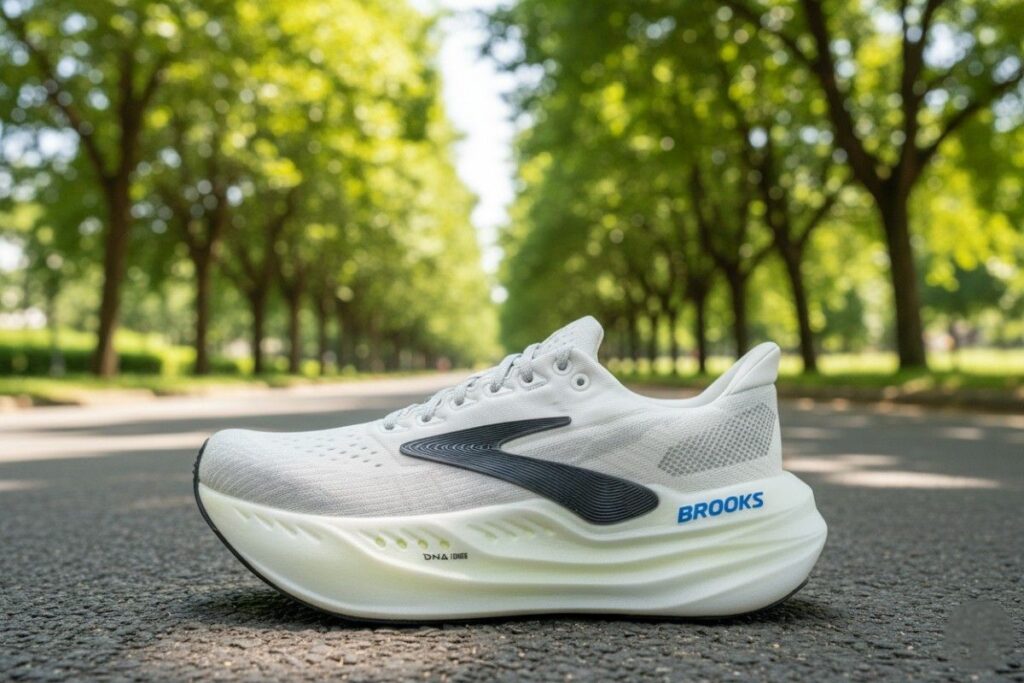
The HOKA Bondi 8 leans toward ultra-cushioned, stability-focused comfort, while the Brooks Glycerin Max caters to runners seeking a softer, more adaptive ride with slightly better responsiveness. The HOKA Bondi 8 features a high-stack EVA midsole with a 4 mm drop, creating a dense, protective platform that excels at long recovery runs or for those who prioritize joint comfort. The Brooks Glycerin Max uses nitrogen-infused DNA LOFT v3 foam, which delivers a lighter and more bouncy feel while maintaining plush underfoot cushioning.
The Bondi 8 tends to feel bulkier underfoot but offers superior stability and heel support, whereas the Glycerin Max feels smoother and more flexible during transitions. Both use breathable engineered mesh uppers and are not waterproof. Buy the HOKA Bondi 8 if you prefer maximum cushioning and stability for long, slow miles; choose the Brooks Glycerin Max if you want a lighter, more energetic daily trainer with balanced softness.
Comparison Table — HOKA Bondi 8 vs 1080 v14 vs Brooks Glycerin Max
| Name | Weight (lbs per pair) | Waterproof (Y/N, membrane) | Best For | Price (US MSRP) |
| HOKA Bondi 8 | 1.35 lb | No, engineered mesh upper. | Everyday running, recovery runs, long easy miles. | $165 |
| New Balance Fresh Foam X 1080 v14 | 1.31 lb | No, breathable engineered upper. | Everyday training, long runs, all-day wear; good wide/width options. | $164.99 |
| Brooks Glycerin Max | 1.31 lb | No, engineered mesh upper. | Max-cushion daily trainer for long, comfortable miles and recovery. | $200 |
Who Should Buy / Avoid HOKA Bondi 8
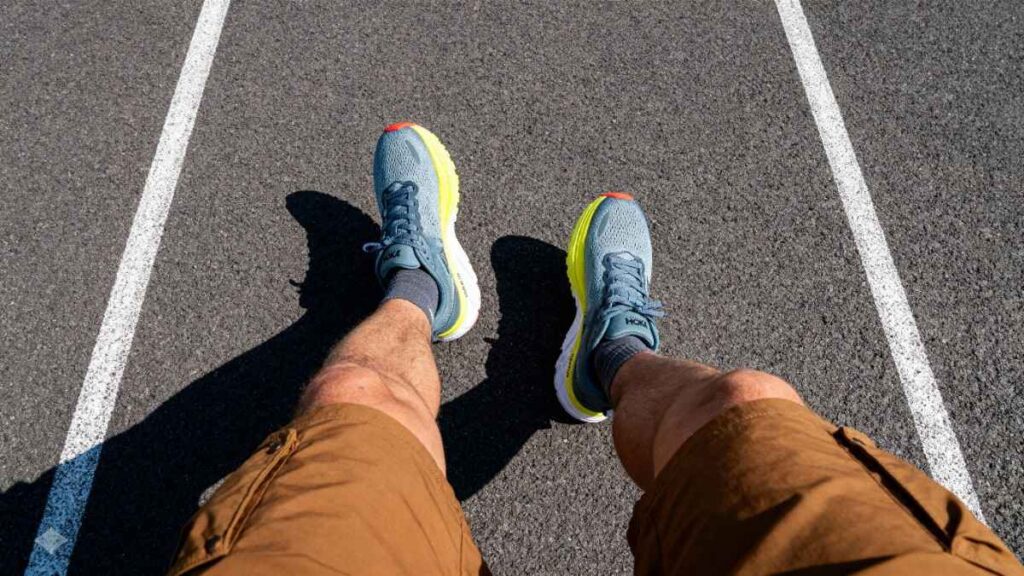
You Should Buy if
- You log long daily miles or recovery runs and crave generous cushioning and joint protection.
- You prefer a supportive, stable feel via geometry rather than aggressive motion control.
- You want a shoe that handles orthotics or custom insoles without compromising fit.
- You prioritize comfort over speed and want stable ride quality throughout your run.
You Should Avoid if
- You frequently run fast tempo workouts and want a lighter, more responsive ride.
- You have very wide forefeet and don’t want to size up or use wide-width options.
- You need waterproofing or plan to run in wet, muddy trails often.
- You require rigid underfoot protection or rock plates for sharp, technical terrain.


